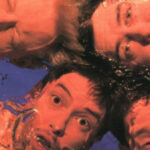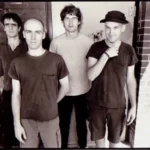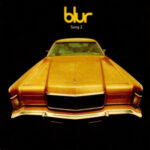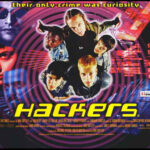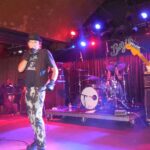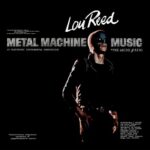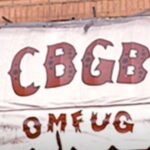 Few venues in the history of American music hold the legendary status of CBGB, a nondescript dive bar located at 315 Bowery in New York City’s Lower East Side. In the mid-1970s, CBGB became the cradle of punk rock, helping launch the careers of bands that would shape the future of music, including the Ramones, Blondie, Talking Heads, and Patti Smith. While the club itself closed in 2006, its legacy as a breeding ground for creativity, rebellion, and musical innovation continues to reverberate.
Few venues in the history of American music hold the legendary status of CBGB, a nondescript dive bar located at 315 Bowery in New York City’s Lower East Side. In the mid-1970s, CBGB became the cradle of punk rock, helping launch the careers of bands that would shape the future of music, including the Ramones, Blondie, Talking Heads, and Patti Smith. While the club itself closed in 2006, its legacy as a breeding ground for creativity, rebellion, and musical innovation continues to reverberate.
CBGB was more than just a club; it was a cultural phenomenon. It stood at the intersection of a decaying city and a group of artists determined to express themselves in new and radical ways. Its significance goes far beyond the punk rock scene—CBGB became a symbol of New York’s underground culture, a place where avant-garde art, music, and lifestyle converged. This article will delve into the full history of CBGB, from its humble beginnings to its rise as the epicenter of punk, its decline, and its enduring legacy.
Origins: Hilly Kristal and the Founding of CBGB
CBGB was founded by Hilly Kristal in December 1973. Born in New Jersey, Kristal had been involved in the New York music scene for decades as a club manager, promoter, and musician. Before opening CBGB, he managed the legendary jazz venue The Village Vanguard and later opened a short-lived club called Hilly’s on West 13th Street. However, it wasn’t until he stumbled upon a dingy bar space on the Bowery that his impact on the music world would begin.
The Bowery in the 1970s was a far cry from the gentrified neighborhood it is today. It was a rough, dilapidated area, home to homeless people, addicts, and drifters, as well as a few bohemian artists and musicians. The space Kristal rented was formerly a biker bar called Hilly’s on the Bowery. Kristal envisioned CBGB as a haven for live music, specifically country, bluegrass, and blues—genres he loved and thought could find a home in New York City. He even christened the club with an acronym: CBGB & OMFUG, which stood for “Country, Bluegrass, Blues and Other Music for Uplifting Gormandizers.”
Despite Kristal’s initial vision for the club, CBGB would quickly evolve into something entirely different. The country, bluegrass, and blues acts he had hoped to attract never materialized. Instead, CBGB became a sanctuary for local musicians who had nowhere else to perform. These bands were mostly unsigned, played original music, and were influenced by the emerging sound of proto-punk and glam rock. At a time when commercial radio was dominated by slickly produced rock and disco, CBGB became a refuge for musicians who were more interested in raw expression than polished presentation.
The Birth of Punk: The Ramones, Television, and the First Wave of CBGB Bands
In 1974, CBGB began hosting a series of bands that would forever change the face of rock music. Among them was a scrappy quartet from Queens called the Ramones. With their leather jackets, torn jeans, and breakneck, three-chord songs, the Ramones embodied the DIY ethos that would come to define punk rock. Their first performance at CBGB in August 1974 was far from polished, but it had an energy and intensity that immediately caught the attention of those in the audience. Their short, fast songs—some lasting barely more than a minute—stood in stark contrast to the sprawling, overproduced rock music that dominated the airwaves.
The Ramones’ performances at CBGB quickly attracted a following, and their simple, loud, and fast style became a blueprint for countless punk bands that followed. Songs like “Blitzkrieg Bop,” “Sheena Is a Punk Rocker,” and “I Wanna Be Sedated” would become anthems for the punk movement, influencing not only bands in New York but around the world.
Around the same time, another band that would become a cornerstone of the CBGB scene was starting to make its mark: Television. Unlike the Ramones, Television’s music was more intricate and experimental, blending punk’s rawness with elements of jazz, psychedelia, and avant-garde rock. Led by Tom Verlaine and Richard Lloyd, Television’s performances at CBGB helped define the club’s early days. They were the first band to land a regular gig at the club and brought a kind of intellectualism to the scene that helped broaden punk’s sonic and thematic horizons.
Television’s lengthy, atmospheric guitar solos and poetic lyrics stood in contrast to the primal energy of the Ramones, but the two bands represented the wide range of music that could flourish at CBGB. In fact, what would come to define the CBGB scene was its eclecticism. The bands that played there were united not by a specific sound but by a shared rejection of mainstream commercialism and a desire to forge new, independent paths.
Other early CBGB regulars included the Patti Smith Group, Talking Heads, and Blondie. Patti Smith, a poet and rock singer, combined elements of punk with beat poetry and avant-garde art. Her 1975 debut album, Horses, produced by John Cale of the Velvet Underground, is widely regarded as one of the most influential albums in punk rock. Smith’s performances at CBGB were electric and often spiritual, with her stream-of-consciousness lyrics challenging the norms of rock music.
Talking Heads, fronted by the awkwardly charismatic David Byrne, brought a more cerebral, art-school approach to the punk scene. Their minimalist, angular sound and quirky lyrics set them apart from the more aggressive punk bands, yet they were embraced as part of the CBGB family. Their 1977 debut album, Talking Heads: 77, would introduce the world to their unique blend of punk, funk, and art rock, and their performances at CBGB helped establish them as one of the most innovative bands of the era.
Blondie, led by the glamorous Debbie Harry, added a pop sensibility to the CBGB scene. While the band’s early music was more closely aligned with punk, they would go on to experiment with other genres, including disco, reggae, and hip-hop, eventually achieving massive commercial success in the late 1970s and early 1980s with hits like “Heart of Glass” and “Call Me.” Blondie’s success outside of CBGB proved that the punk scene could have mainstream appeal without sacrificing its edge.
The CBGB Scene: A Cultural Hub in a Dying City
By the mid-1970s, CBGB had become the epicenter of a burgeoning underground music scene that would soon be known as punk rock. The Bowery, once a dangerous, run-down neighborhood, was now a magnet for musicians, artists, and misfits looking for a place to belong. CBGB wasn’t just a music venue—it was a cultural hub where people could come together and create something new. The club’s grimy, no-frills interior and its reputation for harboring the fringes of society only added to its allure.
CBGB’s ethos was rooted in the idea of originality. Hilly Kristal had a strict rule for bands who wanted to play at the club: they had to perform original material. No cover bands allowed. This rule helped foster a spirit of creativity and experimentation that was essential to the punk movement. Bands didn’t need to have a polished sound or a big following to play at CBGB; they just needed to have something to say.
The scene at CBGB was a melting pot of influences. While punk was the dominant sound, it wasn’t the only one. Avant-garde artists like the Talking Heads, who drew inspiration from visual art and experimental music, shared the stage with more traditional rock acts. Patti Smith infused her performances with poetry and spoken word, while Blondie flirted with pop and disco. This eclecticism was a defining feature of CBGB and set it apart from other venues.
The CBGB crowd was as diverse as the music. The club attracted a wide range of people, from struggling artists and musicians to curious outsiders and music critics. It became a place where anyone could belong, regardless of their background or status. The club’s reputation as a refuge for misfits, rebels, and free thinkers made it a vital part of the downtown New York scene, which was characterized by its bohemian spirit and anti-establishment attitude.
The sense of community that developed around CBGB was central to its success. Many of the bands that played there supported one another, and friendships and collaborations flourished. Musicians, artists, and writers all found inspiration in the scene, and the energy and creativity that flowed through the club helped fuel a larger cultural shift that would come to define the late 1970s and early 1980s.
The Expansion of Punk: The Ramones and the UK Punk Explosion
By the late 1970s, the CBGB scene had started to gain national and international attention. In particular, the Ramones’ influence was beginning to spread far beyond New York. Their fast, loud, and stripped-down sound became the blueprint for the punk rock explosion that would soon take over the world.
In 1976, the Ramones embarked on a tour of the United Kingdom, where they performed at the Roundhouse in London and inspired a new generation of British musicians. This tour is often credited with sparking the UK punk movement, which would give rise to bands like the Sex Pistols, The Clash, and The Damned. The Ramones’ influence on the British punk scene cannot be overstated. Their minimalist, high-energy performances provided a stark contrast to the elaborate, often pretentious rock music of the time, and their DIY ethos resonated with young British musicians who were looking for a way to rebel against the status quo.
The Sex Pistols, in particular, took the raw energy of the Ramones and added a level of political and social commentary that would define the UK punk scene. Whereas the CBGB bands were more focused on personal expression and artistic experimentation, the British punk bands were more overtly political, using their music to challenge authority and criticize the establishment.
Despite these differences, the transatlantic connection between the New York and London punk scenes was undeniable. Bands from both sides of the Atlantic were influenced by one another, and the punk movement became a global phenomenon. While CBGB remained the spiritual home of American punk, its influence could be felt around the world.
Hardcore Punk and the 1980s: A New Generation at CBGB
As the 1970s gave way to the 1980s, the punk scene at CBGB began to evolve. Many of the original CBGB bands, like the Ramones, Blondie, and Talking Heads, had gone on to achieve commercial success, and the punk movement itself had fractured into various subgenres. One of the most significant developments during this period was the rise of hardcore punk.
Hardcore punk took the raw, aggressive energy of punk rock and pushed it to its extreme. The songs were shorter, faster, and louder, and the lyrics were often more politically charged. This new wave of punk bands, which included groups like Bad Brains, Agnostic Front, and Cro-Mags, brought a level of intensity to CBGB that rivaled anything seen in the 1970s.
The hardcore punk scene at CBGB was marked by its sense of urgency and its willingness to confront social and political issues head-on. Bands like Bad Brains, a pioneering African-American hardcore band, brought a level of diversity to the scene that hadn’t been seen before. Their fast, frenetic music combined punk with elements of reggae and funk, creating a sound that was as innovative as it was aggressive.
The hardcore shows at CBGB were infamous for their intensity. The mosh pits that formed in front of the stage were chaotic and often violent, with fans slamming into one another as the music roared. The energy at these shows was palpable, and the sense of community that had defined the earlier punk scene was still present, even as the music became more confrontational.
Despite the rawness of the hardcore punk scene, CBGB continued to be a place where artists could experiment and push boundaries. Many of the bands that emerged from the hardcore scene would go on to have a significant impact on the wider music world, and their performances at CBGB helped solidify the club’s reputation as a breeding ground for new and innovative music.
Decline and Closure: The End of an Era
As the 1980s progressed, the music scene at CBGB began to change. Punk rock, once a radical and underground movement, had become mainstream. Bands like the Ramones and Blondie had achieved commercial success, and the gritty, rebellious spirit that had defined the early days of CBGB began to fade. At the same time, the Lower East Side was undergoing significant changes. The neighborhood, once known for its poverty and crime, was slowly becoming gentrified, and the bohemian spirit that had defined the area was being pushed out.
By the early 2000s, CBGB was struggling to survive. The club’s lease had expired, and the building’s landlord, the Bowery Residents’ Committee, was seeking to raise the rent to an unsustainable level. Hilly Kristal, who had kept CBGB afloat for over three decades, fought to keep the club open, but it was clear that the writing was on the wall.
In 2006, after a lengthy legal battle, CBGB closed its doors for the final time. The last show, held on October 15, 2006, was headlined by Patti Smith, one of the club’s original icons. The show was a bittersweet celebration of CBGB’s legacy, with Smith paying tribute to the venue that had helped launch her career and shaped the future of rock music.
The Legacy of CBGB: A Lasting Impact on Music and Culture
While CBGB may no longer exist as a physical venue, its legacy continues to resonate. The club’s impact on the music world is immeasurable. It was the birthplace of punk rock, a genre that would go on to shape the course of popular music in the decades that followed. The bands that got their start at CBGB—The Ramones, Talking Heads, Blondie, Patti Smith, and many others—became icons, influencing countless musicians and artists around the world.
CBGB was more than just a club—it was a symbol of rebellion, creativity, and artistic freedom. It represented a time when New York City was a haven for outsiders and misfits, a place where people could come together and create something new and exciting. The spirit of CBGB lives on in the countless bands, artists, and musicians who continue to be inspired by the punk ethos of DIY creativity and nonconformity.
Today, the space that once housed CBGB is occupied by a high-end fashion boutique, a stark contrast to the gritty, rebellious energy that once defined the club. However, the memory of CBGB lives on in the hearts and minds of those who were there, as well as in the music that continues to be made in its image.
Conclusion: The Birthplace of Punk and Beyond
CBGB’s significance in music history cannot be overstated. From its humble beginnings as a dive bar on the Bowery to its status as the epicenter of punk rock, the club helped shape the future of music and culture in ways that are still felt today. It was a place where artists could take risks, where originality was valued above all else, and where the underground became the mainstream.
The legacy of CBGB is not just in the music that was played there but in the spirit of creativity and rebellion that it fostered. It was a place where the boundaries of what was possible in music and art were pushed, and its influence continues to be felt in the DIY ethos of independent musicians, artists, and creators around the world.
In the end, CBGB was more than just a music venue—it was a cultural institution, a place where the fringes of society came together to create something extraordinary. While the club may be gone, its impact on the world of music and art will never be forgotten.
This post has already been read 211 times!

